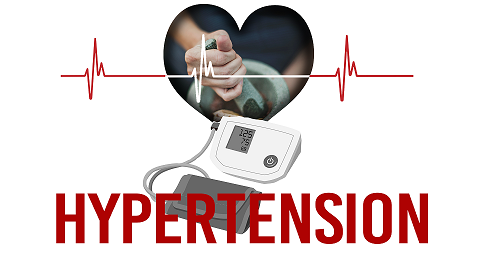 What causes of hypertension and stress?
What causes of hypertension and stress?
Lifestyle plays a very important role in triggering any disease. Incompatible food habits, untimely sleeping habits/insufficient sleep, addiction to smoking or alcohol, suppressing anger, grief or prolonged stress, intake of spicy, salty, sour, oily food, sedentary lifestyle, etc all of these may cause hypertension.
Symptoms of hypertension:
Usually there are no associated symptoms related to hypertension, it can only be detected by your GP in a normal routine health check. Although a few of them may experience repeated headaches, fatigue and tiredness, dizziness, lack of sleep, hot flushes, tinnitus, irritation in eyes may be a few symptoms.
Treatment management for High BP in Ayurveda:
Treatment varies from person to person, depending on Dosha and depending on the intensity of the disease.
• A lifestyle change is what is recommended to start with.
o Following a wholesome diet that is free from spicy, sour and salty food is advised. Junk and masala food should be avoided. Coffee or tea shouldn’t be consumed or one may take 2 small cups/ day.
o Fresh ripe fruits and vegetables should be consumed in excess.
o Canned food, chips, red meat, processed food may be avoided.
o Green chilies, fermented food like dosa should be reduced in quantity or avoided.
• Avoid suppressing visiting the toilet at regular intervals.
• Avoid day sleeping and night awakening.
• Practice Pranayama and yoga.
• Keeping a check on your weight or weight reduction especially around belly helps.
• Avoid smoking, alcohol and dairy products.
• Manage your stress better.
Actual Treatment Procedure:
• Panchakarma treatment is given if the doshas are highly aggravated. Virechana, Basti or Raktamokshana may be given in the involvement of excessive pitta, kapha, vata and rakta respectively.
• Shirodhara – Rhythmic pouring of medicated buttermilk, milk or even oil may be recommended for duration of 45 min to 60 minutes. This helps the person to relax and regularize the hormonal imbalance.
• Shirobasti, Shiropichu or Shiro abhyanga – A soothing head massage may help in proper blood circulation in the brain thus relaxing the body and intern helping hypertension.
Yoga & Pranayama:
• Yoga asanas with breathing should be followed. Asanas to be practiced are:
o Ushtrasana – Camel Pose
o Shashankasana – Child pose
o Bhaddakonasana – Butterfly pose
o Vrikshasana – Tree pose
o Ardha Chakrasana – Half wheel pose
o Ardha Kati Chakrasana – Side wheel pose
o Setubandasana – Bridge pose
o Ardha Halasana – Half Plough pose
o Vajrasana – Dimond pose/ thunderbolt pose
Shavasana – Corpse pose
o Deep Relaxation Technique
o MSRT – Mind Sound Relaxation Technique
o Om Chanting
o Slow Surya Namaskar – Remember forward bend to be done only for 10 seconds.
o Pranayama – Nadi Shudhi Pranayama, Left nostril breathing for 21 times four times a day followed by 5 rounds of nadi shuddhi pranayama, Nada anusandana Pranayama, Brahmari Pranayama, Ujjai Pranayama.
Note: Kapalabhati shouldn’t be practiced by patients with hypertension.
In conclusion I would say that the above information provided is only for your knowledge. Never neglect your health and try to observe within and even the slightest change in the body. Contact a good Ayurveda expert and seek help and practice yoga only under supervision of a trained yoga instructor. Simply a smile can change a lot of things. Hypertension can be life threatening hence take your medication regularly and alteration in lifestyle will help you in the long run.
